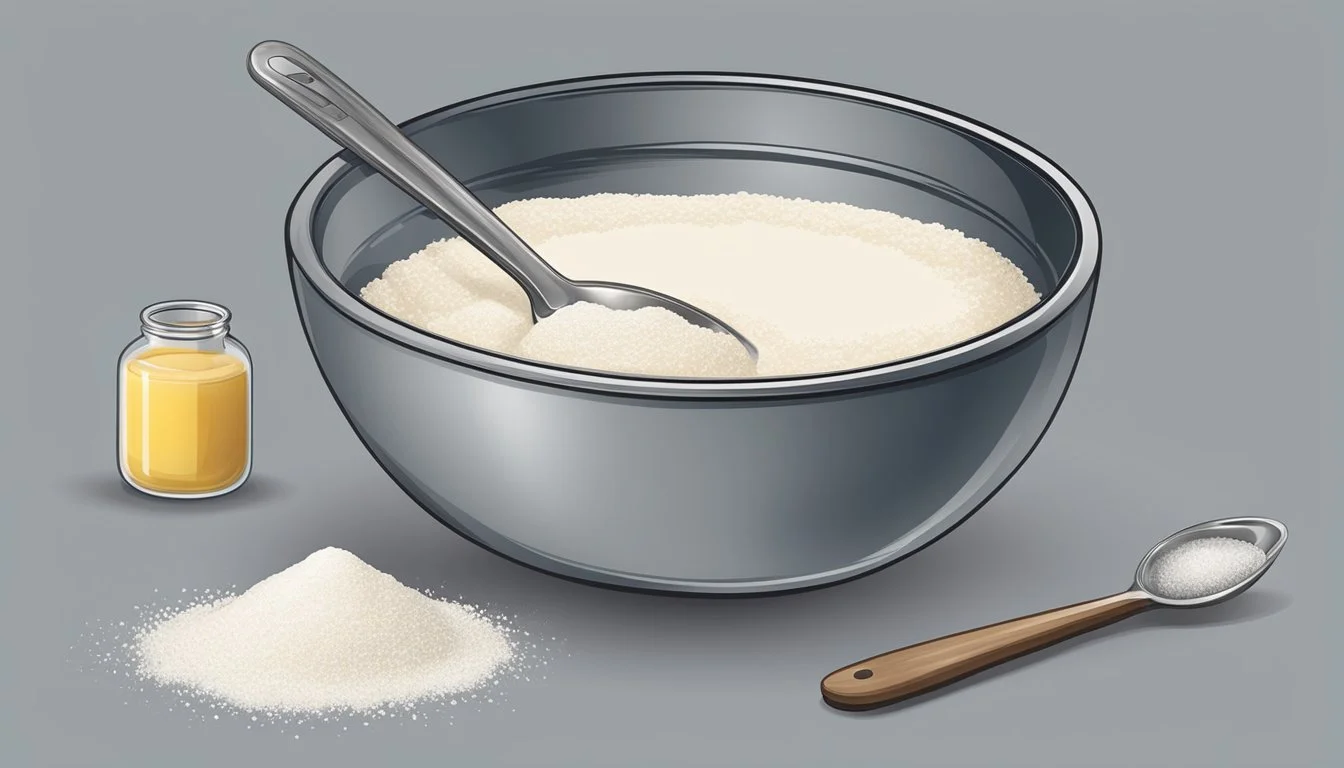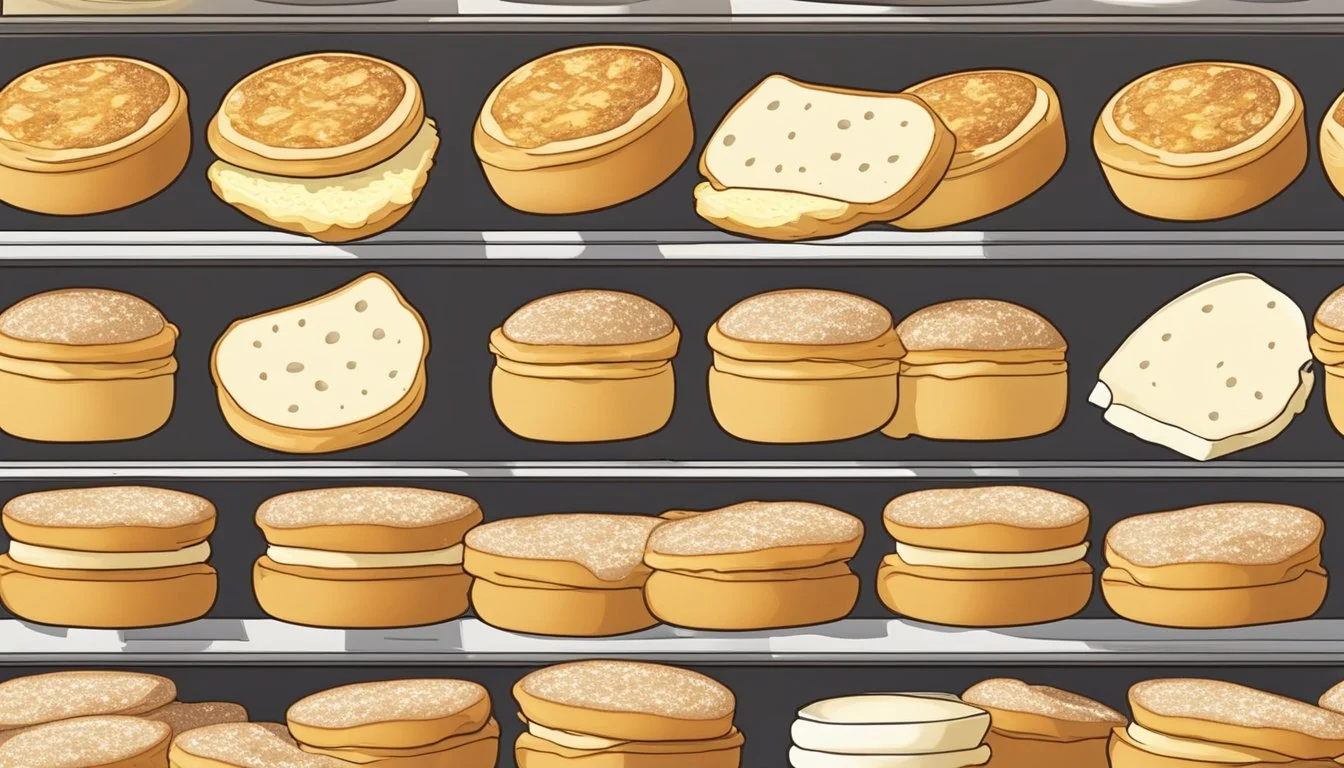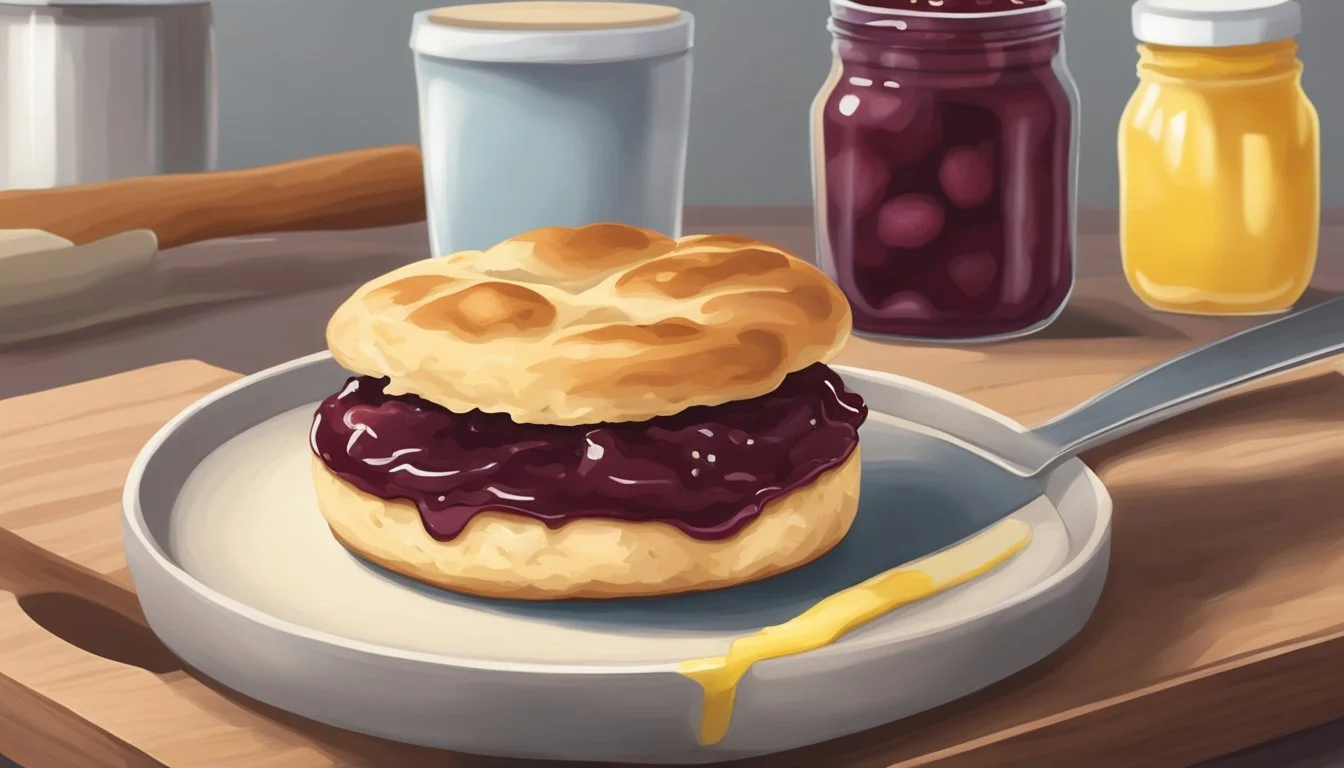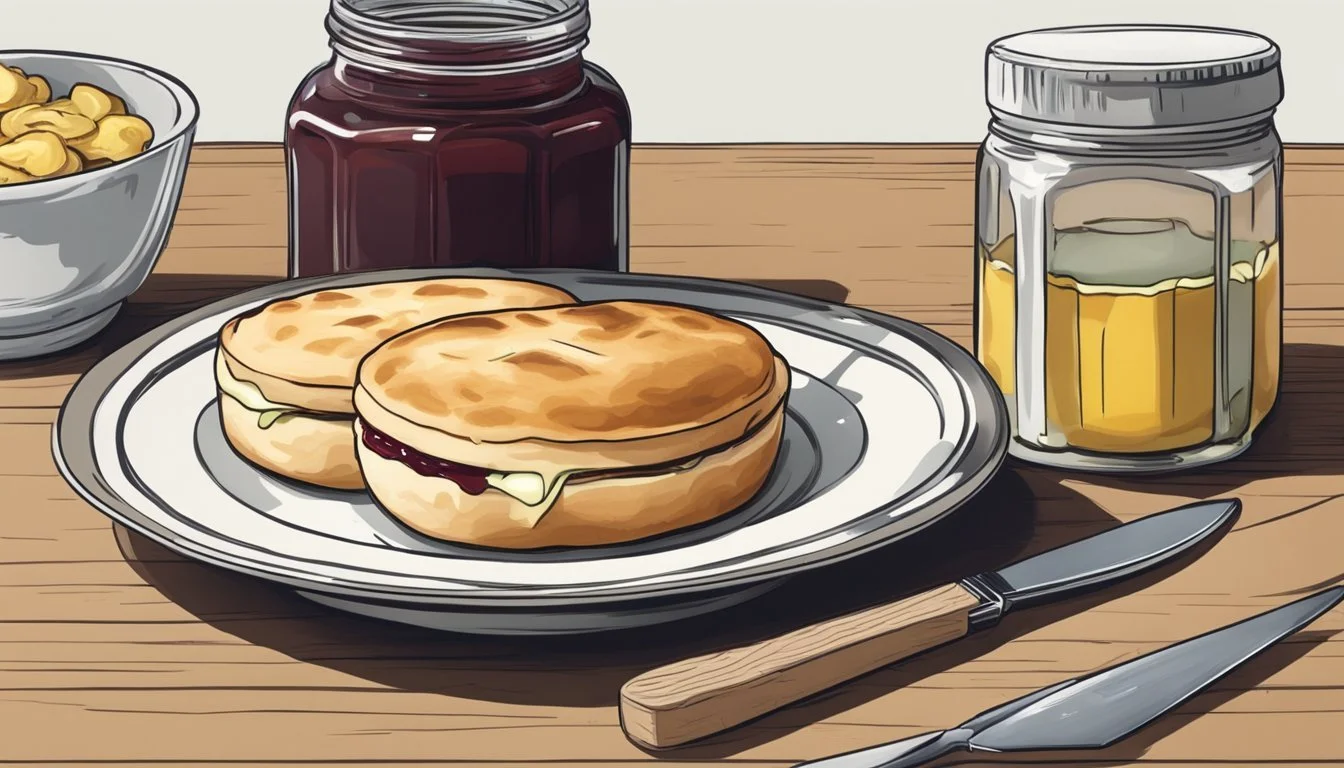How do you eat an English muffin?
Tips for Enjoying this Breakfast Classic
English muffins offer a unique twist on the traditional muffin with their distinctively aerated texture and subtle flavor. As a versatile option for breakfast or snacks, they can be enjoyed in a variety of ways to suit different tastes and occasions. Whether opting for a simple preparation or a more elaborate dish, the English muffin serves as a culinary canvas that can be paired with an array of toppings and fillings.
Preparing an English muffin begins with toasting it to achieve a light, crispy exterior while maintaining a soft, chewy interior. This foundation can then be enhanced with sweet or savory toppings. Some individuals prefer a classic approach, smearing the toasted halves with butter, jam, or honey. In contrast, others transform the English muffin into a hearty breakfast sandwich by adding eggs, cheese, and meats such as bacon (how long does bacon last?) or sausage.
The flexibility of the English muffin extends beyond breakfast. They can also serve as the base for quick and easy mini pizzas, be used in place of bread (how long does bread last?) for small sandwiches (What wine goes well with sandwiches?), or even be transformed into a dessert treat when topped with sweet spreads and fruits. Their firm structure makes them ideal for absorbing flavors without becoming soggy, thus they are a staple in many kitchens for their multipurpose nature.
History and Origin of English Muffins
English muffins are distinguished by their unique preparation as a yeast-leavened bread. Their history is rooted in England where the term "muffin" typically referred to a variety of breads and cakes. The key evolution occurred in the late 19th century when Samuel Bath Thomas, a British expatriate, began baking his own version of the English muffin in New York City. He later trademarked his product in 1926.
Early References and Evolution
1703: Earliest recorded use of the word "muffin"
Late 1800s: Samuel Bath Thomas's version gained popularity in the United States
1894: First known use of the term "English muffin"
Thomas's adaptation was likely based on the crumpet, a similar British bread item, but his recipe was unique and remains a closely guarded secret. Various recipes exist for making English muffins at home, yet Thomas’s original method still separates his product, known as Thomas' English Muffins, from imitators.
Ingredients and Preparation
Traditionally, English muffins are made from a simple combination of:
Flour
Yeast
Milk
Butter
Eggs
The dough is typically cooked on a griddle, giving the muffins their characteristic flat sides and porous texture, ideal for toasting and absorbing butter and other spreads.
Trademarking and Proprietary Recipe
In the baking industry, recipes are often intellectual property. Thomas’s recipe, trademarked in the early 20th century, was instrumental in establishing a specific identity for the English muffin within the American marketplace. While the complete recipe is proprietary, modern recipes for homemade English muffins continue to circulate, drawing inspiration from the qualities Thomas perfected.
Essential Ingredients for Making English Muffins
Crafting the perfect English muffin requires a precise combination of essential ingredients. The quality and measurement of these components are paramount to achieving the desired taste and texture.
Flour Choices
The base of an English muffin is flour. Typically, all-purpose flour is used due to its moderate protein content, which is ideal for a soft but chewy texture. For a heartier muffin, bread flour can be a substitute because of its higher gluten content.
Leavening Agents
Yeast is the primary leavening agent in English muffins, causing the dough to rise and creating a light, porous structure. Usually, active dry yeast or instant yeast is preferred.
Liquids
Liquids in an English muffin recipe commonly include water and milk. Whole milk is often used for its fat content, which enhances the flavor and softens the dough. Water, on the other hand, is crucial for dissolving yeast and hydrating the flour.
Fat and Flavor Enhancers
Unsalted butter is the standard fat used for its ability to add richness without altering the sodium content significantly. Flavor enhancers like salt and sugar are used sparingly to balance the taste.
Additional Ingredients
Some recipes call for eggs to enrich the dough, while dusting the muffins with cornmeal or semolina before cooking gives them their classic coarse texture and prevents sticking.
Substitutes and Variations
For dietary preferences, gluten-free and dairy-free options are available. Gluten-free flour blends can replace regular flour, and non-dairy milk or oils can substitute for whole milk and butter. Spices such as nutmeg or cinnamon may be added for a unique twist.
Measuring Tools
Accurate measurements are crucial, and using standard cups and spoons ensures consistency. Additionally, a kitchen scale can be beneficial for weighing ingredients, particularly flour, to achieve better results.
English Muffin Preparation
The preparation of English muffins includes a series of steps that are critical in achieving a textured muffin with the desired nooks and crannies. The key to a delicious English muffin lies in the methodical approach to mixing, proofing, shaping, cooking, and applying finishing touches.
Mixing and Kneading
To start, one combines flour, water, yeast, and any additional ingredients into a mixing bowl. Using a stand mixer or a fork, the ingredients are combined until a soft dough forms. The dough should then be kneaded for a few minutes until it's smooth and elastic, which is essential to develop the gluten that gives the muffins their texture.
Proofing the Dough
After kneading, the dough must rise. Place it in a greased bowl, cover it, and let it rise until it doubles in size. This process may take about 1 to 2 hours. For enhanced flavor, the dough can also be refrigerated overnight to slowly rise before shaping.
Shaping the Muffins
Once the dough has risen, it's deflated gently and turned out onto a surface. Using a cookie cutter or a bowl inverted, individuals cut rounds from the dough. These rounds are then left to rise again until puffy, setting the stage for their unique nooks and crannies.
Cooking Techniques
Cooking can be done on a cast iron skillet, griddle, or electric griddle over low heat. The muffins are cooked until they're golden brown on both sides, which typically takes about 7 to 10 minutes per side. This slow cooking allows the muffins to be heated thoroughly, ensuring a perfect rise and texture.
Finishing Touches
Once cooked, English muffins should have a crisp exterior with a light, airy interior. They’re best served toasty warm. Before serving, one can use a fork to split them open to preserve those coveted nooks and crannies, then toasted to a golden brown in a toaster oven. This gives the exterior a pleasing crunch, contrasting with the soft interior.
Serving and Eating English Muffins
English muffins offer a versatile and delightful way to start the day, whether it's by creating a hearty breakfast sandwich or just enjoying them toasted with a spread. They can be enjoyed in various ways, across a range of meals and with a multitude of toppings to suit any taste.
Splitting and Toasting
To prepare an English muffin, one should split it open, preferably by fork-splitting to preserve its nooks and crannies. This technique helps achieve a toasty and irregular surface which is perfect for catching and holding toppings. Once split, toast the muffin to a light brown color until it reaches a desirable crispness.
Toppings and Pairings
The warm, toasted muffin can be served with:
Butter, melting into its unique texture.
A variety of jams, honey, or peanut butter, for a sweet touch.
Cream cheese (how long does cream cheese last?) or avocado for a smooth and rich flavor.
Breakfast proteins such as bacon, sausage, or eggs add a savory dimension.
Cheese, melting under the warmth of the freshly toasted muffin.
Fresh tomato or vegetables for a healthier option.
Fruit for a refreshing contrast to the toasty English muffin.
English Muffin Variations in Meals
The English muffin's versatility extends beyond the breakfast table:
Breakfast sandwiches, with eggs and cheese, sometimes accompanied by bacon or sausage.
Mini pizzas, using the muffin as a base, topped with tomato sauce, cheese, and other pizza toppings.
Transformed into French toast for a twist on the classic breakfast fare.
As a base for Eggs Benedict, topped with a poached egg, Canadian bacon, and drizzled with hollandaise sauce.
Additional Serving Suggestions
Besides the traditional methods, English muffins can be creatively included in several dishes:
Use them as a side to soak up sauces or to add texture to a dish.
Consider toasting and serving them alongside soups or salads.
They can be used in place of bread crumbs for a unique twist in recipes like meatloaf or stuffing.
Each serving suggestion brings out the English muffin's ability to complement an array of ingredients, making it a staple for both breakfast and beyond.
Customizing Your English Muffins
English muffins offer a versatile base for a wide range of flavors and dietary preferences. They can be customized with various toppings, adapted to fit special diets, and influenced by international cuisine to enhance their taste and nutritional value.
Homemade Recipes
Toasting and Toppings: A classic method is to slice and toast the muffin until golden brown. Toppings can range from simple butter and jam to more elaborate sandwich fillings. For a satisfying breakfast, one might cook an egg until the whites are set and place it atop an English muffin half, garnishing with cheese, bacon, or sliced avocado.
Pizza Muffins: For a quick snack or meal, use English muffins as a base for mini homemade pizzas. The muffins split and toasted make the perfect crust. Cover them with pizza sauce, fresh toppings like bell peppers and onions, and a generous sprinkling of mozzarella cheese, then broil until the cheese is bubbly and golden.
Diet-Specific Alternatives
Gluten-Free Options: For those avoiding gluten, one can find or make gluten-free English muffins from various substitute flours, such as almond or coconut flour.
Vegan and Dairy-Free: Vegan English muffins are readily available, made without animal products, and are perfect for spreading with plant-based options like hummus or vegan cream cheese. For those who are dairy-free, substituting traditional butter with olive oil or a dairy-free butter alternative can be an effective and tasty switch.
International Twists
Embedding Flavors: The muffin's nooks and crannies make it an excellent bread for absorbing flavors. Incorporate international flair by integrating spices or herbs into the dough for a fresh take on the traditional recipe.
Diverse Toppings: English muffins can serve as a canvas for global-inspired toppings. Italians might enjoy a bruschetta topping with diced tomatoes, garlic, basil, and a drizzle of balsamic glaze. Meanwhile, a Lebanese twist could involve spreading the muffin with creamy hummus and topping with za'atar seasoning.
By understanding these customization options, one can transform the simple English muffin into a gourmet treat that satisfies both taste buds and dietary requirements.
Storage and Freshness
Proper storage methods are crucial for maintaining the quality and taste of English muffins. English muffins can be kept fresh by storing them correctly and reheating them when ready to be consumed.
Storing English Muffins
At Room Temperature: English muffins should be kept in a bread box or a cool, dry place for up to a few days. They should be enclosed in a Ziploc bag or an airtight container to protect them from moisture and mold.
In the Refrigerator: For a longer shelf life of up to a week, English muffins can be stored in the refrigerator. One should place them in an airtight container or a resealable plastic bag.
In the Freezer: For long-term storage, English muffins can be frozen. By placing them in a freezer-friendly bag or container, they remain fresh for about three months.
Preserving Freshness
Seal Properly: To preserve freshness, English muffins must be sealed tightly in an airtight container or plastic bag to prevent exposure to air and moisture.
Avoid Direct Sunlight: Keeping English muffins away from direct sunlight and heat sources helps prevent them from becoming stale or dry.
Refrigerate After Opening: Once opened, English muffins stay fresher when refrigerated overnight.
Reheating Instructions
Toaster: The most common reheating method is using a toaster or toaster oven. One can set it to a medium setting to ensure the English muffin warms through without burning.
Oven or Toaster Oven: Reheating in a preheated oven or toaster oven at 350°F for about 10 minutes can restore the crisp exterior and warm center.
Microwave: For a softer texture, an English muffin can be warmed in the microwave for 15-20 seconds, yet this method may not preserve the desired crispness.
Troubleshooting Common Issues
When preparing and enjoying English muffins, a diner may encounter challenges that affect the final product's quality. This section offers solutions to common issues related to dough consistency, texture and taste, and the cooking process, ensuring an optimal eating experience.
Dough Consistency Problems
Issues with dough consistency often arise from inaccurate measurements of flour and milk, or errors in the yeast activation process.
Flour and Liquid Ratio: The dough should be tacky but not overly sticky. If it's too dry, add milk one tablespoon at a time; if too wet, add flour one tablespoon at a time.
Yeast Activation: Yeast should be fresh and activated in warm, not hot, liquid. If the mixture isn't frothy after 10 minutes, the yeast may be stale or the liquid temperature incorrect.
Texture and Taste Challenges
The coveted English muffin's texture and taste can be compromised by a number of factors during preparation and cooking:
Overmixing: Using a stand mixer should be done minimally; overmixing can lead to tough muffins without the characteristic nooks and crannies.
Stale Ingredients: To ensure a full, rich flavor, verify the freshness of all ingredients. Old flour or baking powder can lead to bland muffins.
Cooking Mishaps
Cooking English muffins require attention to detail to avoid a burnt exterior or an undercooked interior.
Griddle Temperature: A griddle or skillet should be preheated to a moderate temperature to allow the muffins to cook evenly. Too high, and they'll burn; too low, and they won't rise sufficiently.
Cooking Time Adjustments: Cooking time may vary; muffins should have a golden brown color and spring back slightly when pressed. If they feel soft, they may need more time.
Nutritional Information
When choosing an English muffin, consumers can consider its nutritional components, such as calorie count, health benefits, and dietary restrictions. English muffins can be part of a balanced diet when consumed with attention to their ingredient composition.
Caloric Content
English muffins generally contain a moderate number of calories, making them a manageable addition to many diet plans. On average, a whole wheat English muffin has approximately 118 calories, while a multigrain variant contains about 136 calories per serving.
Health Benefits and Considerations
English muffins present several health benefits, particularly when options contain whole grains. A whole wheat English muffin can provide around 5 grams of protein and 4 grams of dietary fiber, which can aid in muscle build-up and digestive health. These muffins are often low-fat, with roughly 1 gram of fat per serving. It is worth noting that certain English muffins can also carry about 211 milligrams of sodium, and selecting a brand with lower sodium content may be preferable for individuals monitoring their intake.
Dietary Restrictions
For individuals with dietary restrictions, there are various options available. Whole wheat and multigrain English muffins can be integral to a diet rich in fibers and nutrients. For those avoiding gluten, gluten-free options are available, though it is essential to check for certification to ensure safety for those with celiac disease or gluten sensitivity. Similarly, vegan and dairy-free English muffins cater to those following plant-based diets or with dairy intolerances. It's always crucial to read the labels to ensure compliance with dietary needs.
Conclusion
English muffins are a versatile and popular breakfast item, characterized by their distinctive nooks and crannies that make them ideal for holding melted butter, spreads, and toppings. Traditionally, these muffins are split into two halves using a fork to preserve their texture before toasting, ensuring the interior gets crispy while retaining its softness.
For a nutritious start to one's day, avocado and egg can be added to a toasted English muffin, providing a balance of good fats and protein. Those seeking an indulgent breakfast might prefer a layer of cream cheese paired with smoked salmon. Furthermore, English muffins form a solid base for a classic breakfast sandwich, involving a layer of egg, cheese, and options like bacon or ham.
English Muffins at Breakfast:
Toasted with butter
Avocado and fried or poached egg
Smoked salmon and cream cheese
Breakfast sandwich with egg, cheese, and bacon
In the UK, it's common to lightly toast the muffins and enjoy them with jam and clotted cream. However, opinions may vary on the ideal condiments, and one can experiment with various toppings.
In considering how to best enjoy an English muffin, it's clear that personal preference plays a significant role. However, the method of toasting to activate those nooks and crannies is widely advised. English muffins have cemented their place in breakfast culture due to their adaptability and the unique texture they offer. They invite experimentation with toppings, proving that this simple bread product can be the foundation for a myriad of delicious creations.








